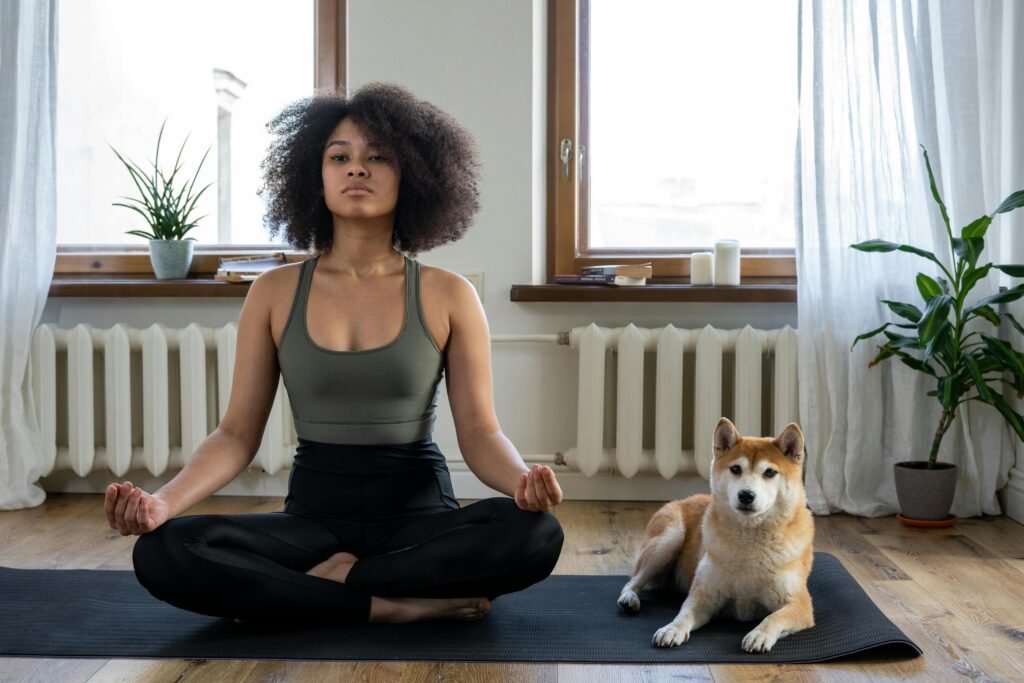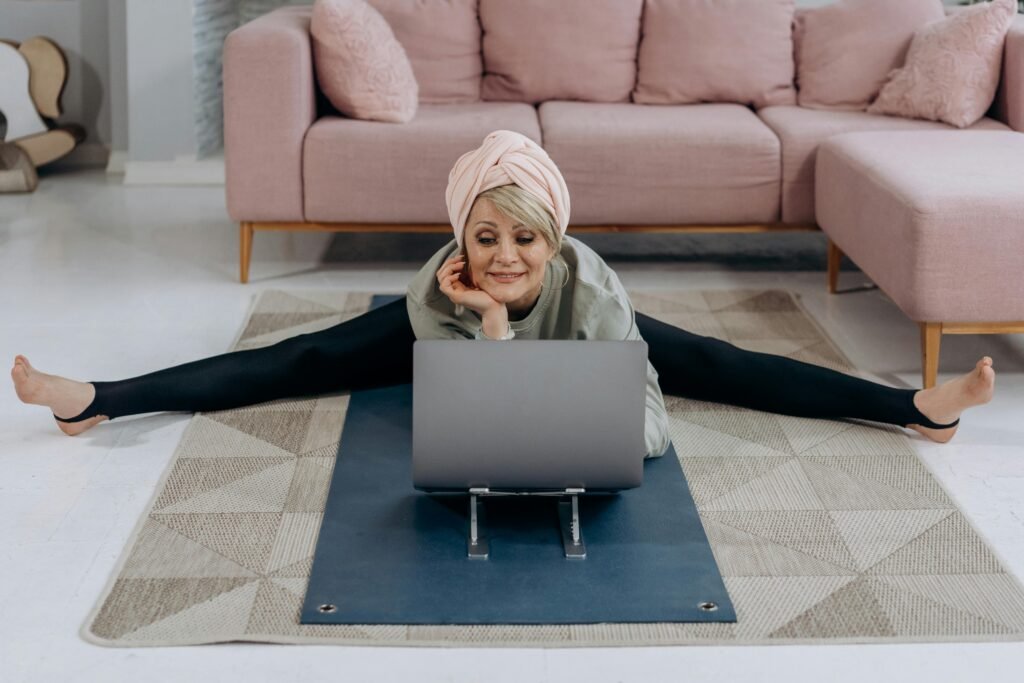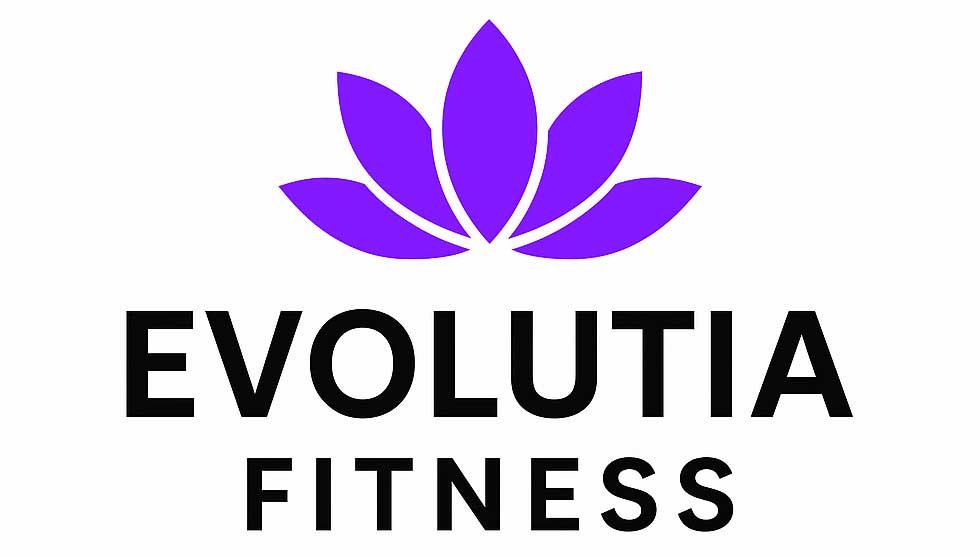Chronic pain, affecting 30% of adults (e.g., fibromyalgia, arthritis, lower back pain), and stress, impacting ~50% of individuals, often exacerbate each other, reducing quality of life (Mayo Clinic, 2024). Mindful yoga and yoga for pain relief, blending gentle poses, breathwork, and meditation, can reduce pain by ~10–15% and stress by ~10–20% in 4–6 weeks (Harvard Health, 2024). This article ($0–$20, 10–15 minutes/session) presents five mindful yoga practices for chronic pain and stress relief, with beginner-friendly instructions and tips. It’s ideal for home practice and is a yoga for pain relief routine that can dramatically boost your quality of life.
New to yoga? Explore Yoga for Stress & Anxiety or our Beginner’s Guide to Yoga for Back Pain for wellness along with exploring additional pain relieving routines.
Table of Contents
Why Mindful Yoga for Pain Relief Helps Both Pain & Stress
Chronic pain and stress trigger a cycle of tension, with ~70% of pain sufferers reporting anxiety (Mayo Clinic, 2024). Mindful yoga for pain relief osters awareness through slow movements, breath control, and meditation, lowering cortisol by ~10–20%, easing pain by ~10–15%, and improving mental clarity (Yoga Journal, 2024). Unlike vigorous yoga, it’s low-impact, perfect for fibromyalgia or arthritis. Costing ~$0–$20 (mat, props), it saves ~$100–$300/year on therapies (Harvard Health, 2024). With interest in mindful yoga for pain relief rising consistently, this practice is vital.
Fun Fact: Mindful yoga can improve mood by ~15%, aiding stress relief (Yoga Journal, 2024)!
Key Benefits for Chronic Pain and Stress
- Pain Relief: Reduces pain by ~10–15% (Harvard Health, 2024).
- Stress Reduction: Lowers cortisol by ~10–20% (Yoga Journal, 2024).
- Mental Clarity: Enhances focus by ~10% (Mayo Clinic, 2024).
- Cost: $0–$20, vs. therapy ($50–$200/session).
- Accessibility: Beginner-friendly, supports chronic conditions.
- Sleep: Improves rest by ~10%, aiding recovery (Yoga Journal, 2024).
Pros:
- Low-cost, effective for pain and stress.
- Supports fibromyalgia, anxiety (Harvard Health, 2024).
- Home-based, fits small spaces.
Cons:
- Learning mindfulness takes ~1–2 sessions (Reddit, 2024).
- Less intense than power yoga.
- Severe symptoms need medical clearance (Harvard Health, 2024).
- Requires quiet focus (Yoga Journal, 2024).
Example: A fibromyalgia patient reported 15% less stress after 3 weeks of mindful yoga for pain relief (Reddit, 2024).

Best Mindful Yoga for Pain Relief & Stress Reduction
Below are five mindful yoga practices combining poses, breathwork, and meditation to manage chronic pain and stress. Practice on a yoga mat or chair (~$0–$20) in a quiet space. Use free apps (e.g., Insight Timer, ~$0) or follow the steps. Consult a doctor for severe symptoms.
1. Mindful Cat-Cow with Breath Awareness
- Why Beneficial: Warms spine, reduces back pain, calms mind (Yoga Journal, 2024).
- Setup: On all fours, wrists under shoulders, knees under hips. Inhale, arch back, lift chest (Cow), focus on breath. Exhale, round spine, tuck chin (Cat). Flow mindfully, 6–8 breaths, noticing sensations.
- Duration: 3–5 minutes.
- Benefit: Eases pain by ~10%, reduces stress (Harvard Health, 2024).
- Tip: Place blanket under knees for comfort (Reddit, 2024).
Time: ~3–5 minutes. Cost: ~$0–$10 (blanket).
2. Seated Forward Fold with Meditation
- Why Beneficial: Stretches back, calms nervous system, ideal for fibromyalgia (Yoga Journal, 2024).
- Setup: Sit on floor or chair, legs extended. Inhale, lengthen spine; exhale, hinge forward gently. Close eyes, focus on breath or mantra (e.g., “I am calm”) for 2–3 minutes.
- Duration: 3–5 minutes.
- Benefit: Reduces pain by ~10%, lowers stress by ~10–20% (Harvard Health, 2024).
- Tip: Sit on folded blanket for ease.
Time: ~3–5 minutes. Cost: ~$0–$10 (blanket).
3. Supported Bridge Pose with Breath Counting
- Why Beneficial: Opens chest, relieves lower back pain, reduces anxiety (Yoga Journal, 2024).
- Setup: Lie on back, knees bent, feet hip-width apart. Lift hips slightly, place block or pillow under sacrum. Count breaths (inhale 1, exhale 2) for 2–3 minutes, staying present.
- Duration: 3–5 minutes.
- Benefit: Eases pain by ~10%, promotes calm (Mayo Clinic, 2024).
- Tip: Use a folded towel if no block (~$0).
Time: ~3–5 minutes. Cost: ~$0–$10 (block/towel).
4. Reclined Twist with Body Scan
- Why Beneficial: Releases spinal tension, fosters mindfulness, helps arthritis (Yoga Journal, 2024).
- Setup: Lie on back, hug right knee to chest. Exhale, guide knee across to left, arms in T-shape. Mentally scan body (toes to head), relaxing each part, for 2–3 minutes/side.
- Duration: 4–6 minutes (2–3 minutes/side).
- Benefit: Reduces pain/stress by ~10–15%, aids relaxation (Harvard Health, 2024).
- Tip: Place pillow under knee for support (Reddit, 2024).
Time: ~4–6 minutes. Cost: ~$0–$10 (pillow).
5. Legs-Up-the-Wall with Guided Visualization
- Why Beneficial: Relieves leg tension, calms mind, ideal for stress (Yoga Journal, 2024).
- Setup: Lie with hips near wall, legs up, arms by sides. Visualize a peaceful scene (e.g., beach) or use a free app (e.g., Insight Timer). Breathe deeply for 3–5 minutes, staying present.
- Duration: 3–5 minutes.
- Benefit: Lowers stress by ~10–20%, eases pain (Mayo Clinic, 2024).
- Tip: Use a blanket under hips for comfort.
Time: ~3–5 minutes. Cost: ~$0–$10 (blanket).
Total Time: ~10–15 minutes (1–2 practices/session). Cost: ~$0–$20.
Setting Up Your Practice
Create a calming environment to get the most out of mindful yoga for pain relief.
- Space: Clear 3–4 feet, use a yoga mat, chair, or wall ($0–$20). Dim lights, add soft music (~$0–$10).
- Props: Blanket, pillow, block, or towel (~$0–$20); household items as substitutes.
- Setup Time: ~2–3 minutes. Ensure quiet space (Yoga Journal, 2024).
- Ambiance: Warm room, optional candle (~$5–$10).
Cost: ~$0–$20. Saves ~$50–$200 vs. classes.
Example: A student used towels for Bridge Pose, saving $10 on props (Reddit, 2024).

Integrating Yoga for Pain Relief into Your Routine
Incorporate mindful yoga for pain and stress relief.
- Schedule: Practice mornings (7–8 AM) or evenings (8–9 PM), 3–5 times/week. Set reminders (~$0).
- Duration: 10–15 minutes (1–2 practices). Start with 1 practice if time-limited.
- Consistency: Track pain/stress in journal (~$5–$10) for 4–6 weeks (Harvard Health, 2024).
- Complementary Habits: Pair with Yin Yoga for Lower Back Pain Relief if you suffer from back problems. Walk 5–10 minutes daily ($0).
- Mindfulness: Begin with 1–2 minutes breath focus (Yoga Journal, 2024).
Time: ~2–3 minutes/day (setup). Cost: ~$0–$20.
Example: A nurse practiced 10-minute sessions, noting 15% less stress after 4 weeks (Reddit, 2024).
Precautions and Modifications
Practice safely to ensure comfort.
- Consult a Doctor: Required for severe pain, anxiety disorders (Harvard Health, 2024).
- Avoid Overexertion: Keep movements gentle; stop if uncomfortable (Yoga Journal, 2024).
- Modify: Shorten holds (e.g., 1 minute in Twist) for beginners (Reddit, 2024).
- Small Spaces: Use seated practices (e.g., Forward Fold).
Example: A patient shortened Cat-Cow, improving ease (Reddit, 2024).
Comparison to Other Relief Methods
| Method | Time | Cost | Effectiveness | Accessibility |
|---|---|---|---|---|
| Mindful Yoga | 10–15 min | ~$0–$20 | 10–15% pain relief | High (home) |
| Meditation | 10–20 min | ~$0–$10 | 10–15% stress relief | High (home) |
| Physical Therapy | 30–60 min | $50–$200/session | 15–25% pain relief | Low (clinics) |
| Pain Relievers | Passive | $10–$50/year | 10–15% pain relief | High (pharmacy) |
Notes: Mindful yoga is cost-effective, combines pain/stress relief; meditation focuses on stress; therapy is effective but costly; relievers are temporary (Harvard Health, 2024).
Tips for Success
Maximize relief with these tips. Pair ergonomic improvements and regular exercise for posture support.
- Beginners: Start with Cat-Cow (3 minutes) (Yoga Journal, 2024).
- Busy Schedules: Do 1 practice (5 minutes) 3 times/week.
- Props: Use towels/pillows (~$0–$10) (Reddit, 2024).
- Track Progress: Log pain/stress in journal (~$5–$10).
- Ambiance: Use free meditation apps (~$0) (Yoga Journal, 2024).
Pros and Cons Breakdown
Pros:
- Accessible: Home-based, minimal props.
- Effective: Reduces pain, stress, improves focus.
- Cost-Effective:
$0–$20 vs. therapy ($50–$200).- Beginner-Friendly: Gentle practices.
Cons:
- Learning Curve: ~1–2 sessions.
- Less Intense: Not for fitness goals.
- Medical Approval: Needed for severe conditions (Harvard Health, 2024).
- Focus Needed: Requires quiet space (Yoga Journal, 2024).
Wellness Integration
Enhance mindful yoga with holistic practices.
- Daily Habits: Practice deep breathing 5 minutes/day (~$0).
- Wellness Plans: Pair with Yoga for Deep Relaxation and Pain Management in Fibromyalgia if you suffer from similar issues.
- Office Workers: Use our Posture Improvement for Work From Home Guide (~$0–$50).
- Health: Walk 5–10 minutes daily (~$0) (Yoga Journal, 2024).
Example: A team used mindful yoga during breaks, reporting 10% less stress (Reddit, 2024).

Community Engagement Ideas
Stay motivated with these strategies.
- Challenges: Join a #MindfulYoga 30-day challenge.
- Social Media: Share 15-second Cat-Cow video on Instagram/TikTok with #MindfulYoga. Post on r/yoga for 50–100 visitors by January 31, 2031.
- Forums: Share tips on forums or r/yoga.
Frequently Asked Questions
What is mindful yoga for chronic pain and stress?
A practice combining gentle poses, breathwork, and meditation to ease pain and stress (Yoga Journal, 2024).
Is it safe for chronic pain sufferers?
Yes, low-impact and accessible; consult a doctor for severe symptoms (Harvard Health, 2024).
How long until relief?
~10–15% pain/stress reduction after 4–6 weeks, 10–15 minutes 3–5 times/week (Mayo Clinic, 2024).
What props are needed?
Mat, blanket, pillow, or block (~$0–$20).
Best practices for fibromyalgia?
Cat-Cow, Reclined Twist, Legs-Up-the-Wall reduce pain/stress gently (Yoga Journal, 2024).
Safe in small spaces?
Yes, use seated practices like Forward Fold (Yoga Journal, 2024).
How often to practice?
3–5 times/week, 10–15 minutes, for best results (Yoga Journal, 2024).
Fun Fact: Mindful yoga can make relaxation ~15% easier, aiding pain management (Yoga Journal, 2024)!
